Bill Dickey
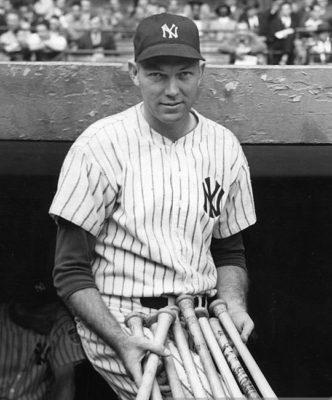
| Birthdate | 6/6/1907 |
| Death Date | 11/12/1993 |
| Debut Year | 1928 |
| Year of Induction | 1954 |
| Teams | Yankees |
| Position | Catcher |
As a player and a Yankee manager and coach, 11-time All Star Bill Dickey helped teams win fourteen World Series Championships.
Leave a commentIn the collection:
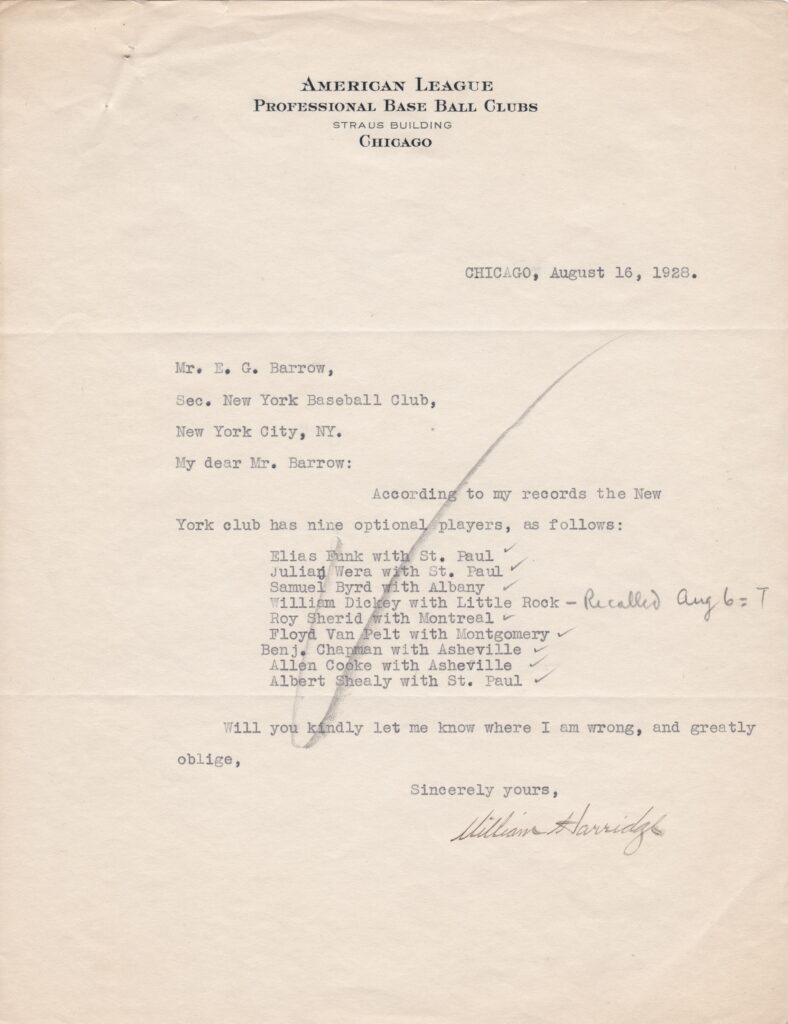
Hall of Fame catcher Bill Dickey made his MLB debut on 8/15/1928
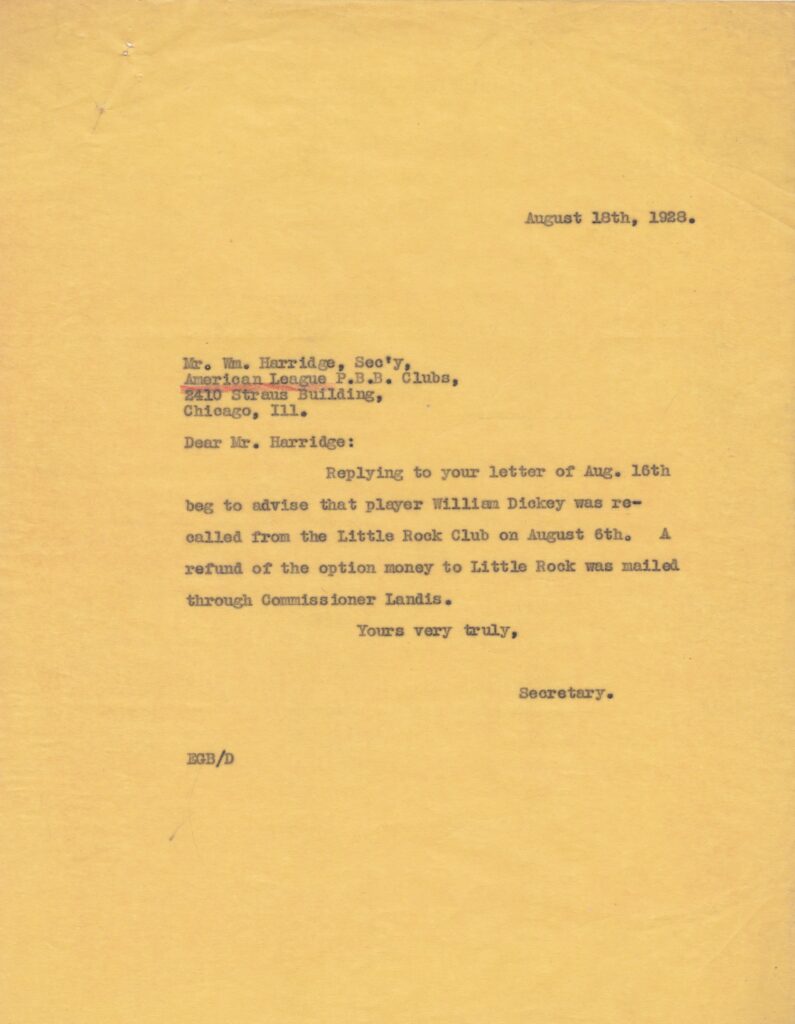
The Yankees responded to Harridge’s letter two days later to clarify Dickey's status
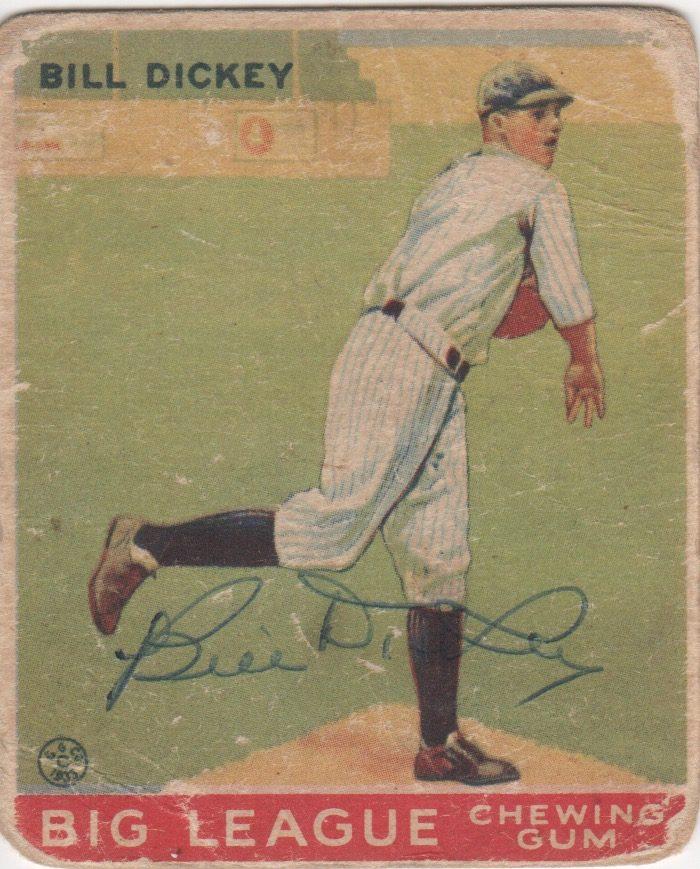
Original 1933 Goudey adorned with a vintage Bill Dickey autograph
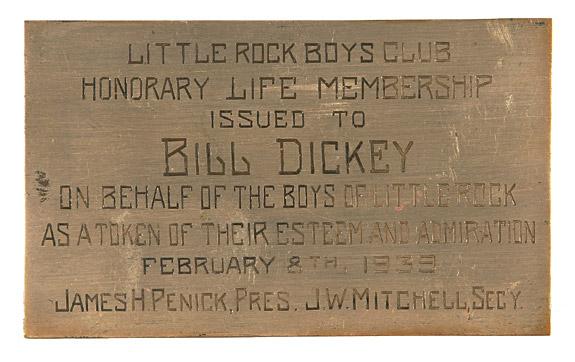
Dickey hit .302 with a .403 on-base percentage in 1939, the last time he reached either mark
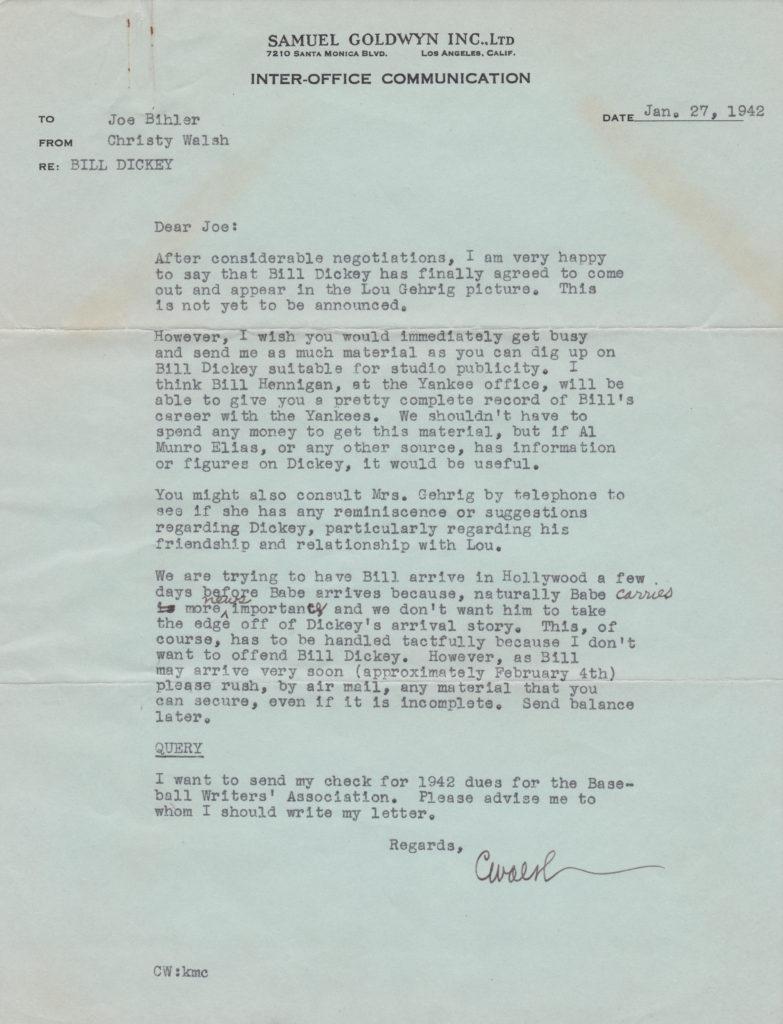
Dickey appeared as himself in the Lou Gehrig biopic Pride of the Yankees
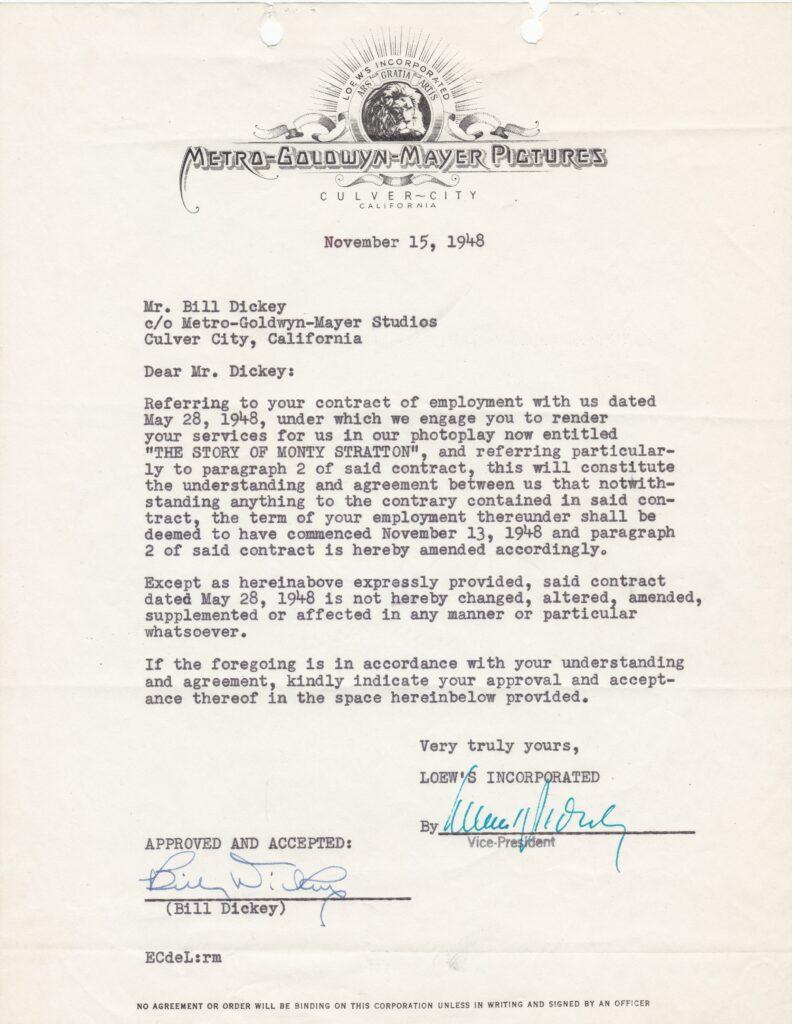
The catcher also appeared "The Stratton Story" - his second Academy Award-winning film
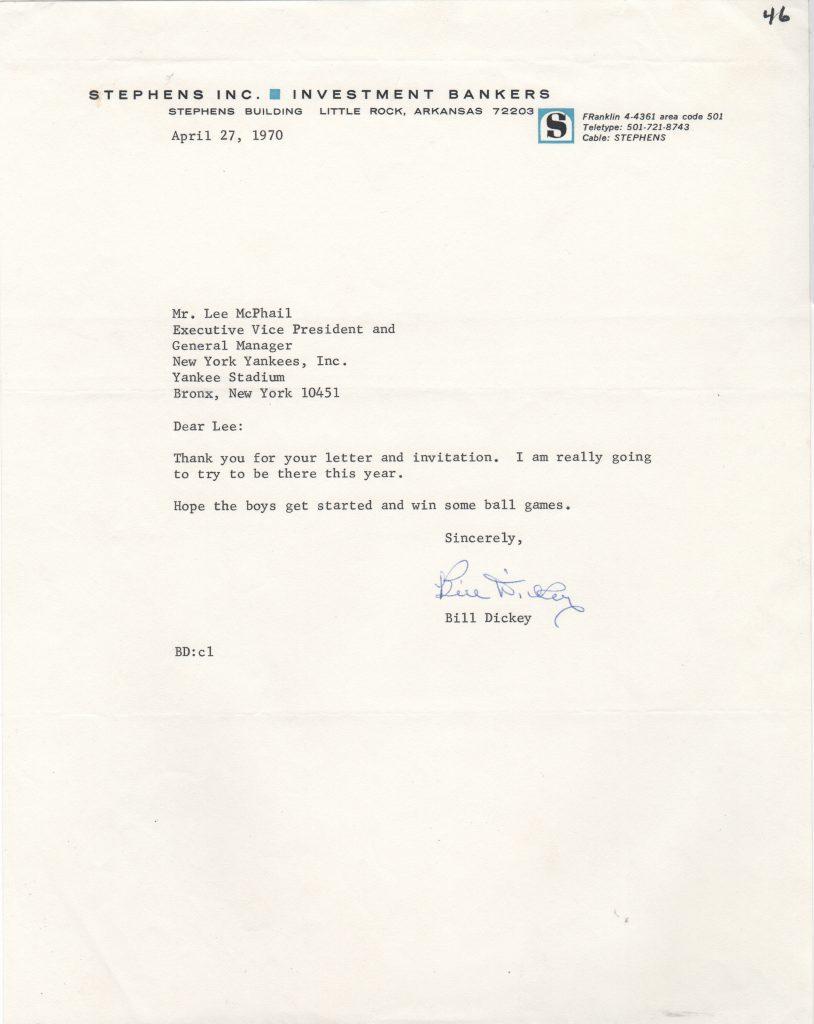
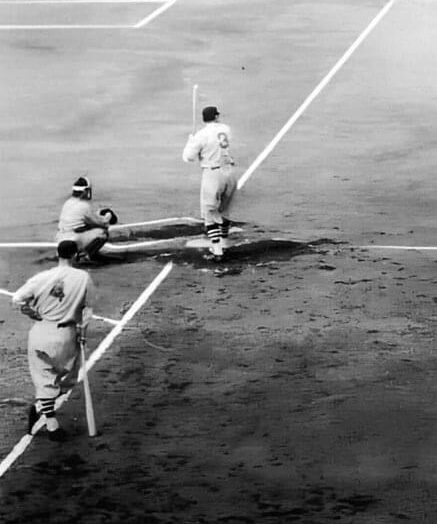
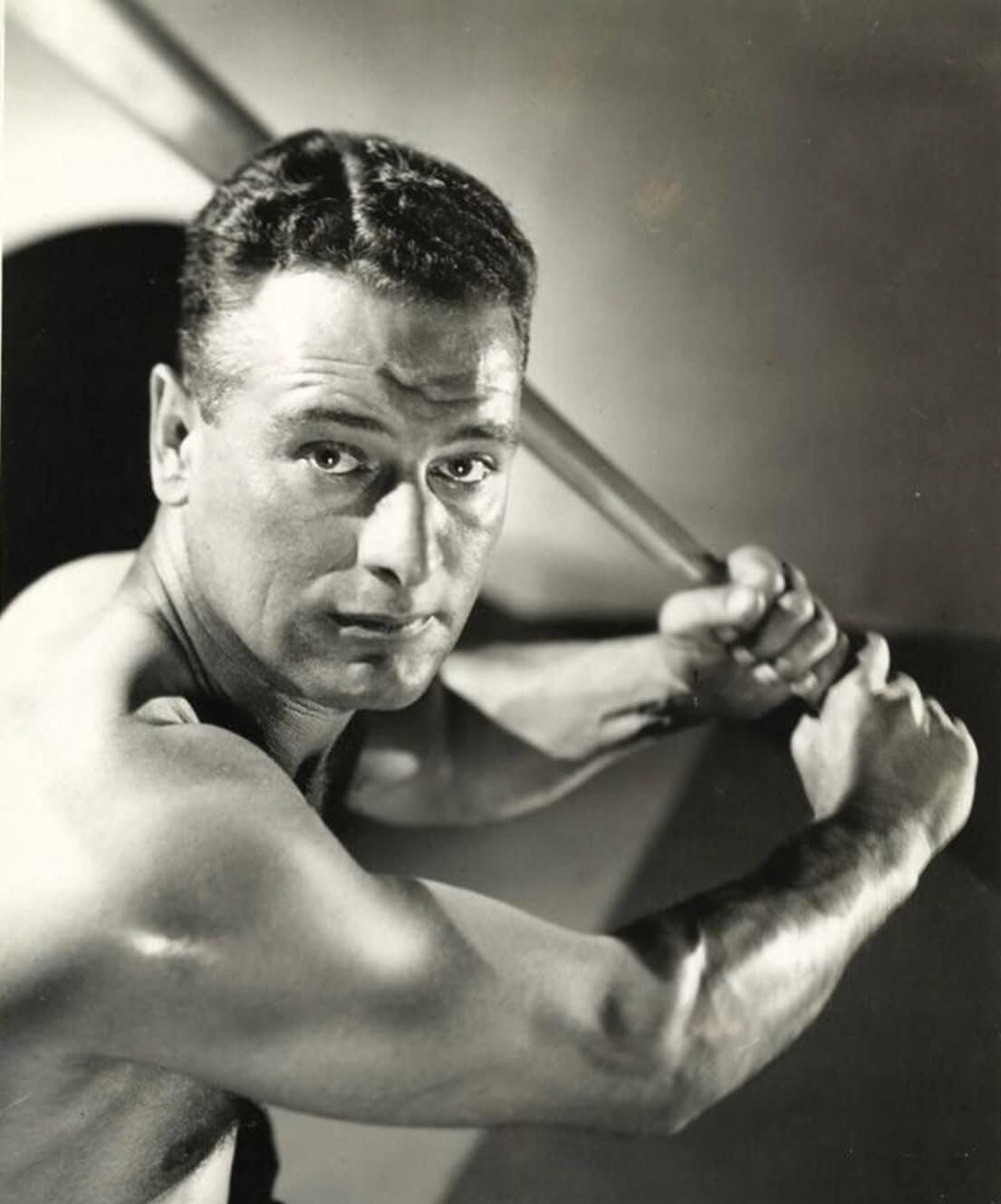
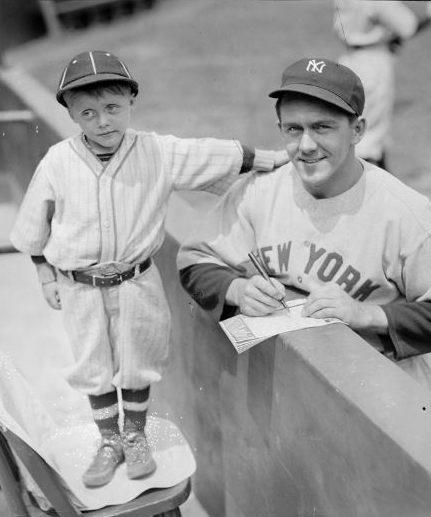
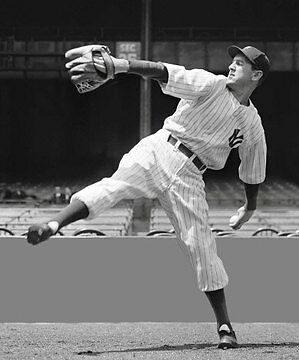
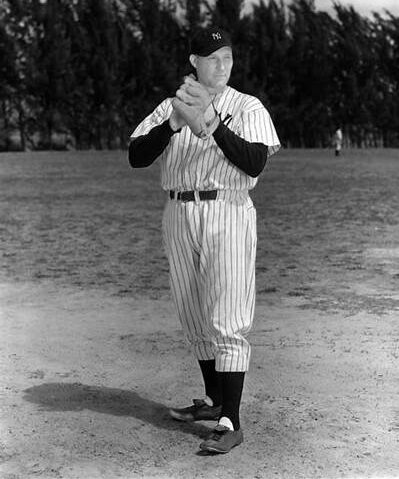
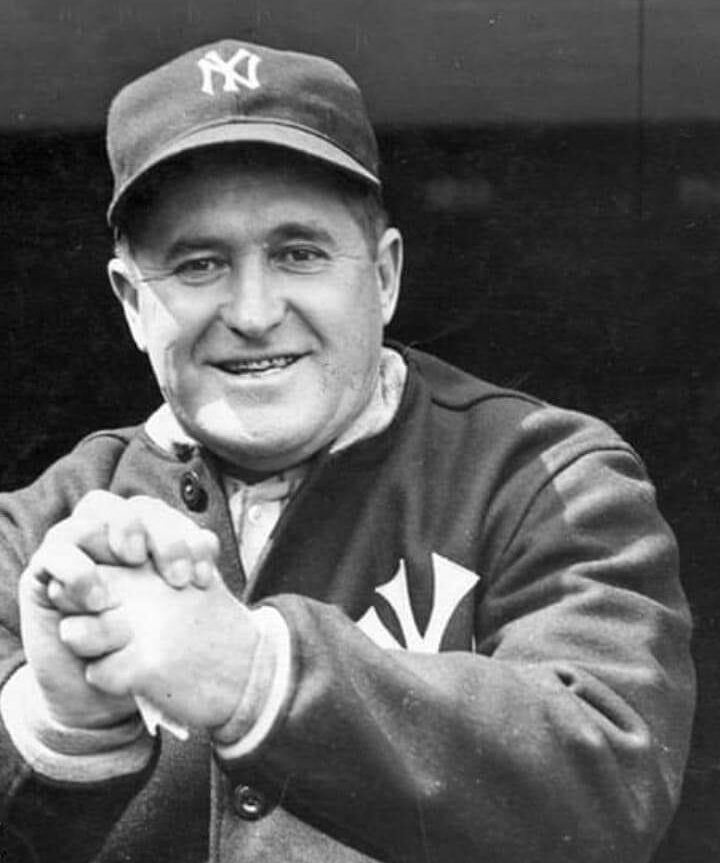
No one in the USA was old enough to drink in 1928.